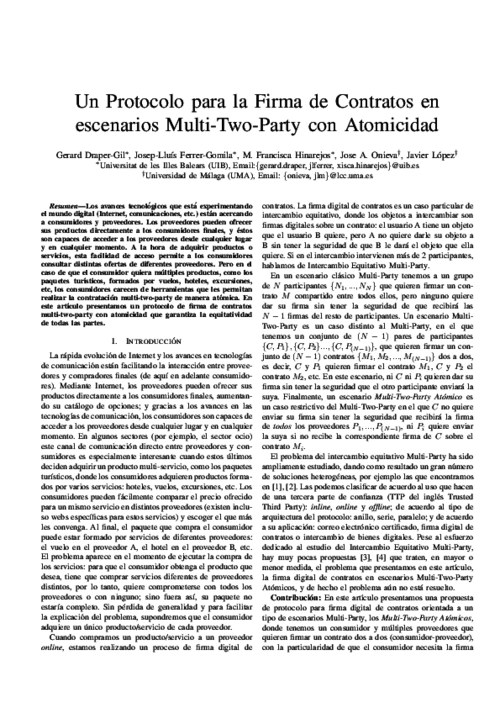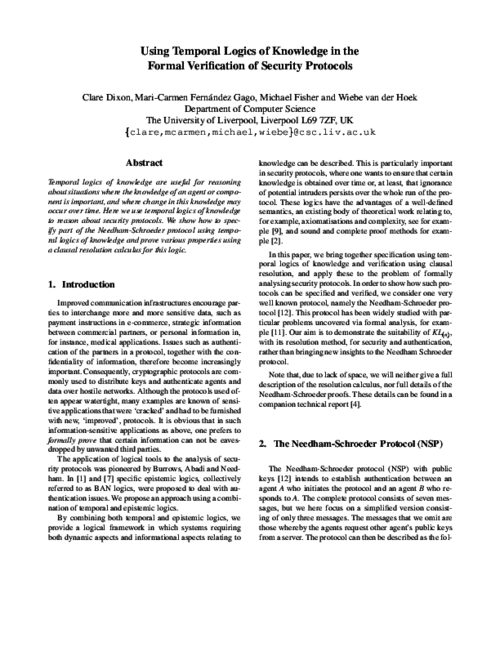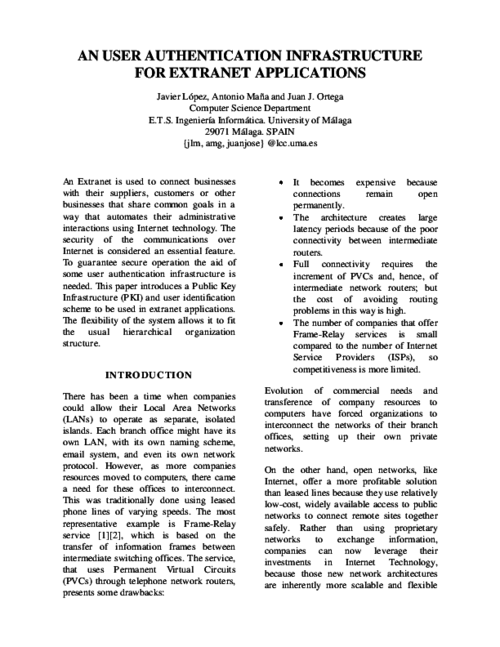XII Reunión Española de Criptología y Seguridad de la Información, pp. 357-362, 09/2012.
Abstract
Los avances tecnológicos que está experimentando el mundo digital (Internet, comunicaciones, etc.) están acercando a consumidores y proveedores. Los proveedores pueden ofrecer sus productos directamente a los consumidores finales, y éstos son capaces de acceder a los proveedores desde cualquier lugar y en cualquier momento. A la hora de adquirir productos o
servicios, esta facilidad de acceso permite a los consumidores consultar distintas ofertas de diferentes proveedores. Pero en el caso de que el consumidor quiera múltiples productos, como los paquetes turísticos, formados por vuelos, hoteles, excursiones, etc, los consumidores carecen de herramientas que les permitan realizar la contratación multi-two-party de manera atómica. En
este artículo presentamos un protocolo de firma de contratos multi-two-party con atomicidad que garantiza la equitatividad de todas las partes.

11th International Symposium on Temporal Representation and Reasoning (TIME’04), IEEE Computer Society, pp. 148-151, 2004. DOI
Abstract
Temporal logics of knowledge are useful for reasoning about situations where the knowledge of an agent or component is important, and where change in this knowledge may occur over time. Here we use temporal logics of knowledge to reason about security protocols. We show how to specify part of the Needham-Schroeder protocol using temporal logics of knowledge and prove various properties using a clausal resolution calculus for this logic.

VI Reunión Española de Criptología y Seguridad de la Información (VI RECSI), pp. 329-340, Sep 2000.
IEEE International Carnahan Conference on Security Technology, IEEE Press, pp. 354-362, October, 1999.
Abstract
An Extranet is used to connect businesses with their suppliers, customers or other businesses that share common goals in a way that automates their administrative interactions using Internet technology. The security of the communications over Internet is considered an essential feature. To guarantee secure operation the aid of some user authentication infrastructure is needed. This paper introduces a Public Key Infrastructure (PKI) and user identification scheme to be used in extranet applications. The flexibility of the system allows it to fit the usual hierarchical organization structure.

 ]
]